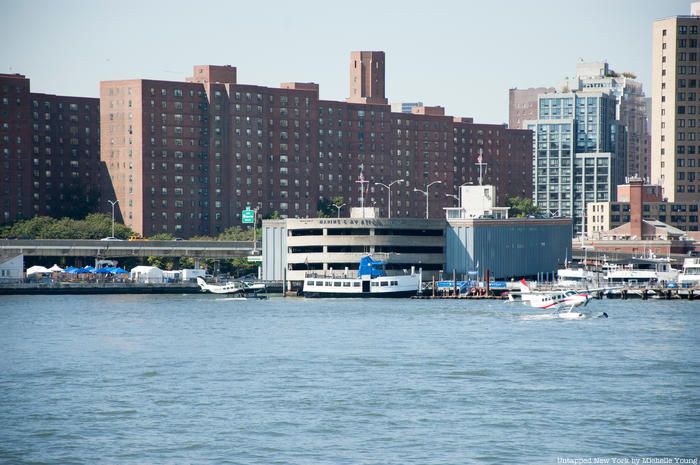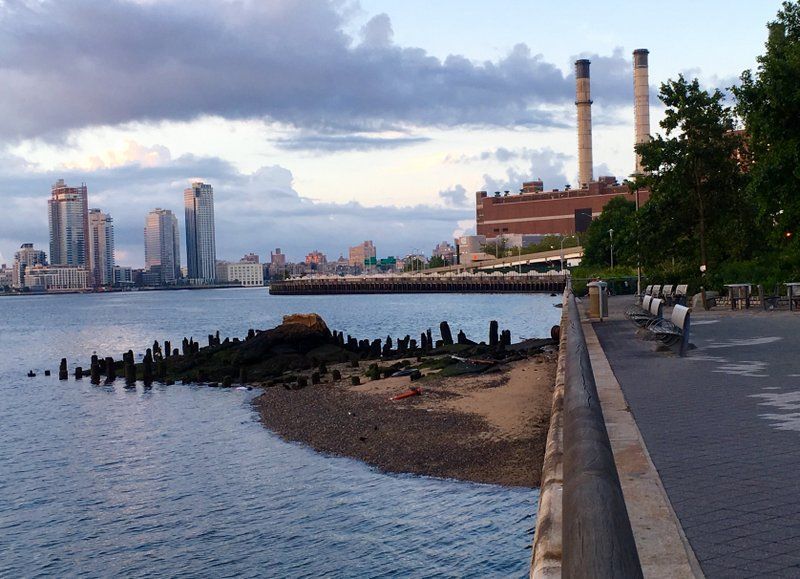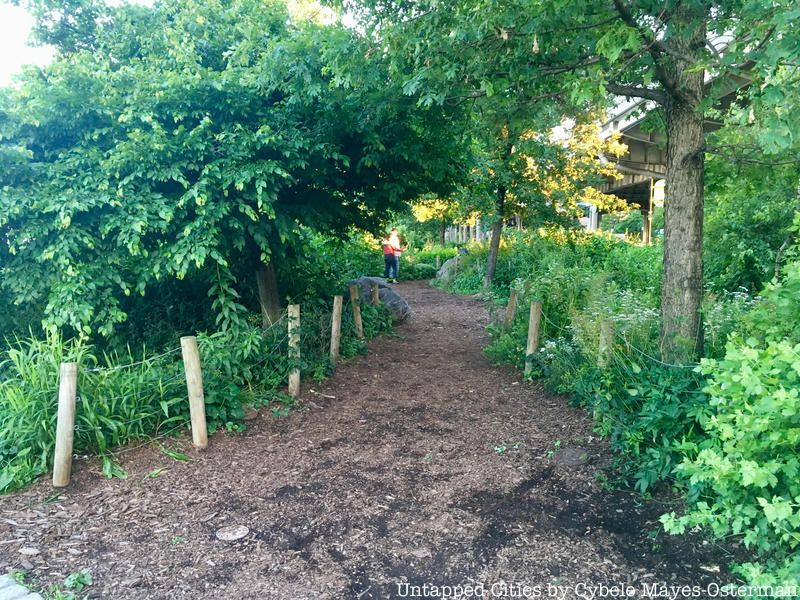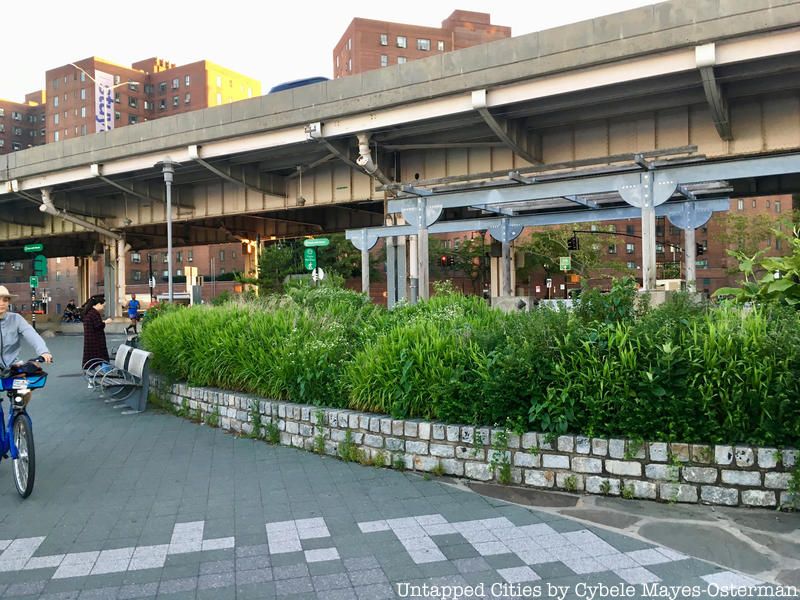Exclusive Gilded Age Arts Society Debuts New Public Exhibits in NYC
The American Academy of Arts and Letters, a venerable New York cultural institution, is a portal to art across time!


Stuyvesant Cove Park runs from 18th to 23rd Street on the waterfront of Manhattan’s East Side. It began as an industrial site, adjacent to what was known as the New York City’s “Gas House District,” and later became a symbol of public victory over private big business, and it has been an important neighborhood staple for many years.
The park, and specifically its tiny, rocky beach, was recently featured in a short dance film called “No Man’s Land” by Karen Loew. The film explores the mystery and intrigue of this little-known oasis on the tip of Manhattan. The movie is currently on view at the 14th Street Y, along with photos and information about the park. In addition, the exhibit invites participants to share their stories and memories of this hidden gem.
Read on to discover the top 10 secrets of Stuyvesant Cove Park.
Before Stuyvesant Cove Park ever existed, it was a cement plant run by the Transit-Mix Concrete Corporation. It created the material that would be used to build Stuyvesant Town/Peter Cooper Village and many other places. After the plant closed, it remained a brownfield until plans for the Riverwalk, a controversial housing development and marina began.
The park’s shape is actually defined by the cement. When the factory was in operation, it would illegally dump large quantities of cement out into the water, and this waste gathered together to form the outcropping that would become the beach.

In the 1980s, the Related Company proposed a plan to build Riverwalk, a development that would include 1,800 luxury residential units, 22,000 feet of commercial space, a hotel and a 220-foot marina. Local residents, fearing they would lose all access to the waterfront and also concerned for the aquatic and natural life there, banded together to form a movement called Citizens United Against Riverwalk. In 1992, the plans for Riverwalk were tabled for good.
Following this, the Stuyvesant Cove Park Association, Inc. was founded. Today, the park prides itself on maintaining a green, open space for New York City residents to explore the East River.

Photo by Karen Loew of No Man’s Land
When you think of beaches, Manhattan isn’t exactly the first place that comes to mind. But there is indeed a beach on this island: a stretch of sand at the edge of Stuyvesant Cove Park.
This beach is not a commercial beach, and you won’t find sunbathers. What you will find are moss-covered rocks, kelp and algae, and a beach strewn with trash and treasures that the sea has washed up.
The beach offers magnificent views of the Queensborough Bridge and the sunset. Many New Yorkers value the beach as their own private oasis, a place to catch a breath of fresh air and to meditate to the sound of water lapping against the shore.
There’s another hidden sandy beach in Inwood. Check it out here.

The park’s natural habitat is populated solely by native plant and animal species. These include milkweed, which is accompanied by a thriving population of monarch butterflies (the park has even been dedicated a “Monarch Waystation”), tangles of berry bushes, trees, flowers, and much more. Some of these species have difficulty acclimating to the nearby saltwater river, but most have adjusted well, and the park is now a carefully curated display of New York’s flora and fauna.
New York has already lost 30% of its native plant species, so parks like this one are vital resources that preserve valuable natural life. Native plants reduce erosion and flooding and purify water and air. The park’s current manager, Liza Mindemann, is creating a program that will showcase plant species native to Manhattan and Long Island as part of an outdoor classroom for local schools.

The Stuyvesant Town/Peter Cooper Village area has become a well-developed neighborhood, but the waterfront in its early days it was the Dry Dock District, a central location for New York shipbuilding and the land itself was known as the Gas House District. The first “marine railway” was created there, which helped funnel heavy ships in and out of the water.
The Transit-Mix Cement Company was run by William J. McCormack. McCormack, also known as “Mr. Big,” was involved in dubious interactions with unions and the mob. He even inspired the “Mr. Upstairs” character in the 1954 movie On the Waterfront with Marlon Brando.
 Photo by Karen Loew of No Man’s Land
Photo by Karen Loew of No Man’s Land
Karen Loew’s short dance film, No Man’s Land is a moving tribute to the strange majesty of Stuyvesant Cove Park. It focuses on a single dancer, following her movements as she spins and floats around the beach while the sun sets. Its atmospheric, dreamlike aesthetic is reflected by the changing colors in the sky, which cast the city in various shades before turning everything dark blue.
The film commemorates the park as it is, a secret and unassuming hideaway by the water with so much to offer for those willing to find it.

Stuyvesant Cove Park’s future as a private, little-known destination is still in jeopardy, as most small, wild places in New York City are—inevitably threatened by development’s insatiable hunger, unless someone takes action to protect it. Sometimes the forces of progress are too powerful, though, and the park is slated to become a destination for the NYC Ferry. The ferry landing will open in 2018 on East 20th street, and will connect Long Islanders to Midtown and the Financial District. Still, hopefully it will not be too detrimental on the park’s welfare, though added noise pollution and traffic could be inevitable consequences.
This is one of six routes that will open as part of the Citywide Ferry program, which will also reach as far as the Rockaways and the Bronx, and is expected to carry 4.6 million passengers per year.

Stuyvesant Cove Park is an environmentally friendly, sustainably conscious burst of green in the midst of lower Manhattan’s smokestacks and highways. It hosts the nonprofit Solar One, which is New York City’s Green Energy Education center. Solar One will soon be replacing its current building with a new one, called Solar Two.

Stuyvesant Cove Park is a neighborhood gem not only for its natural abundance but also for its cultural richness. It hosts many festivals and programs, including a Summer Concert series, solo painting shows, kayak groups, and rewilding events.

Part of what makes Stuyvesant Cove Park so special is its location. It is a rare natural place amidst a bustling city. Nearby, the FDR highway roars at all hours of the night, and the Con Ed plant produces its 30 billion pounds of steam every year.
In between it all is this small park and beach, overlooking the river. It is an example of a manmade place taken back by nature, and now it offers humans and animals alike a beautiful space to ponder the world.
For more, check out this article about 7 man-made beaches in NYC and this article about the top 10 secrets of NYC’s Fort Tryon Park.
Subscribe to our newsletter